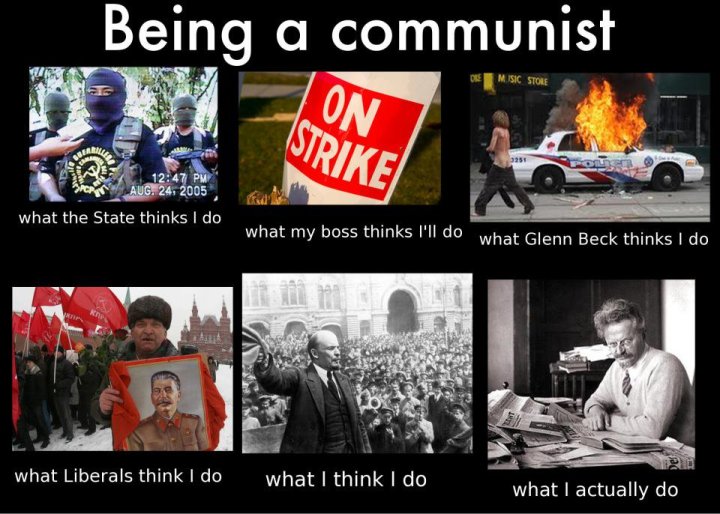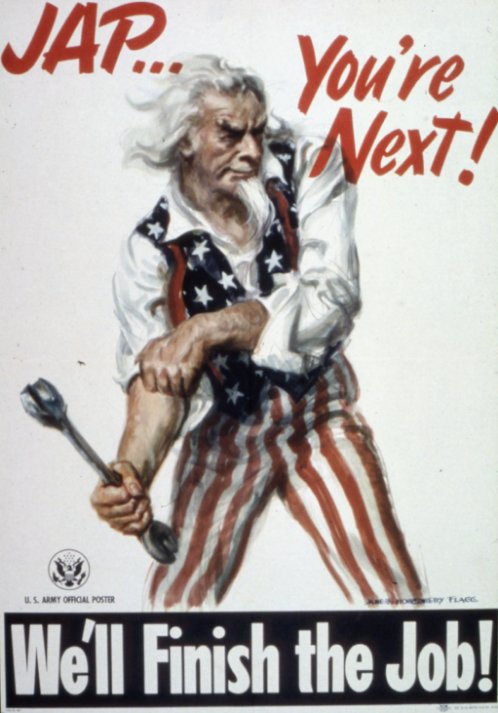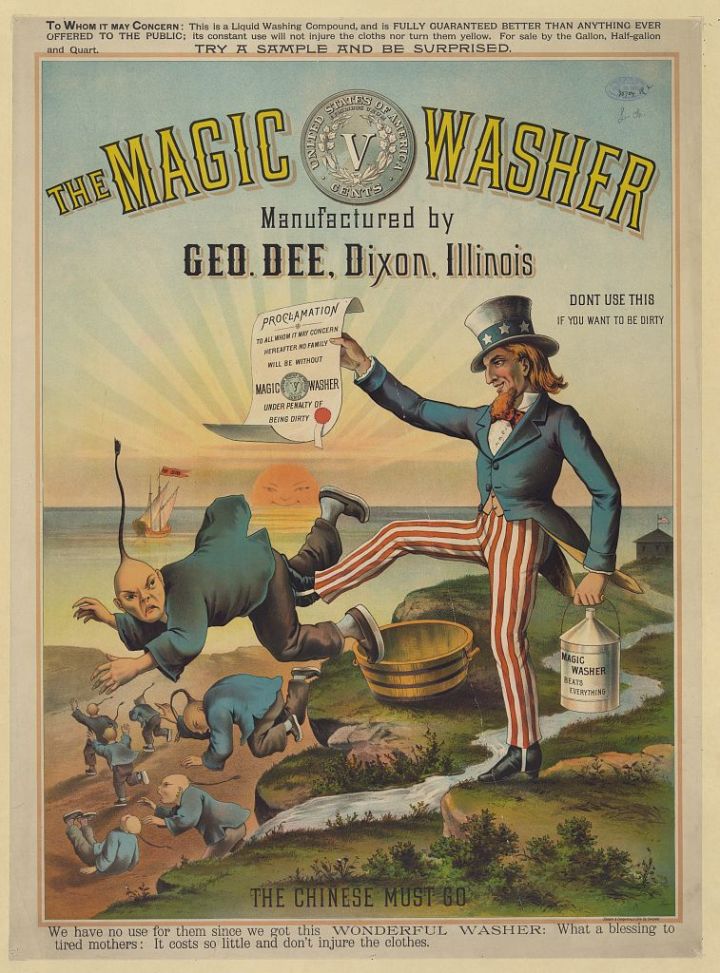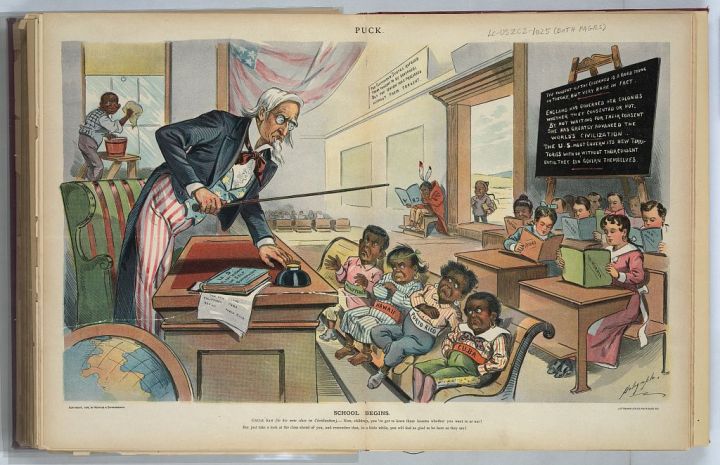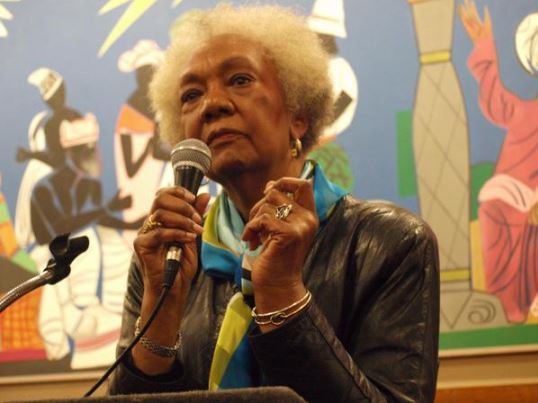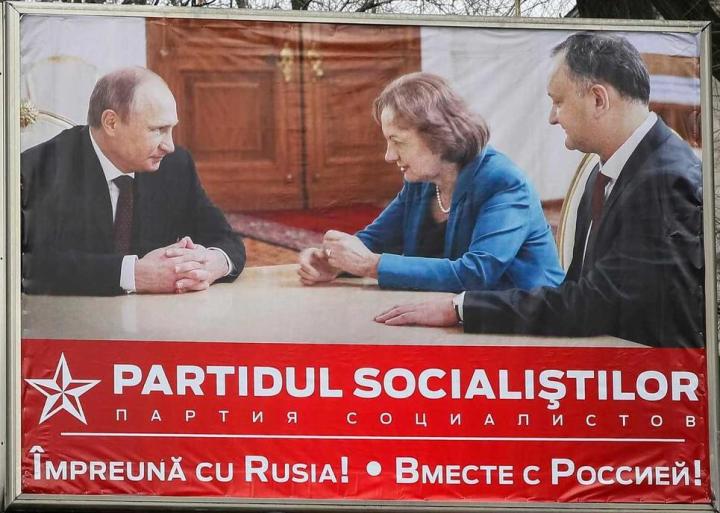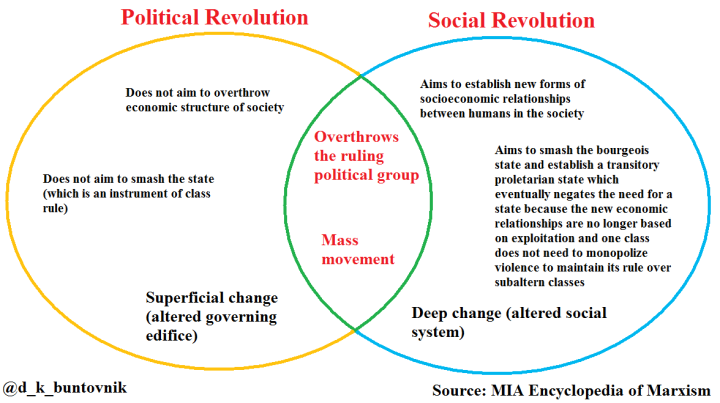On “innovative” imperialism and the farce of American democratic republicanism
By Daniel K. Buntovnik, 6 November 2016
This piece addresses dilemmas facing opponents of war and imperialism in the 2016 U.S. presidential race, the future of war-profiteering, eumemicist racism, the “alt-right” rehashing of neo-Nazi occultism, and Net-Centric Warfare as black magic.
Note: The U.S. presidential campaign season will have come to an end soon, but the general dynamics of the two-party system discussed under the first subheading of this analysis are unlikely to disappear in 2020.
The 2016 U.S. Presidential Election and the Anti-War Citizen
Although the ruling class of the United States of America bends over backwards to display its cleavage into so-called “Republican” and “Democratic” factions, this apparent split is, to a significant degree, exaggerated. Every day, conscious and unconscious agents of plutocratic, oligarchical dictatorship are working hard to drum up minor differences between the political parties of the bourgeoisie. This encourages us to spend a disproportionate amount of our time focusing on the disagreements between Donald Trump and Hillary Clinton and their parties, disengaging from the reality of their joint pursual of key political objectives.
The deeper the illusion of Democratic-Republican cleavage is driven into the citizenry’s consciousness, the more the popularity contest in which the masses are quadrennially enticed to (indirectly) participate is lent legitimacy. The suggestion that this contest represents a real opportunity to take part in the national policy-making process is enhanced by the impression of cleavage, while elevated awareness of bipartisan fusion and unity across the bourgeois political spectrum threatens to foment disenchantment and revolt, because it leads to the conclusion that American elections offers little in the way of actual choice.
The scope of the great false dilemma goes beyond what is commonly understood by the term “two-party system”. This is because U.S. presidential electoral politics have, in the 21st century, actually developed into a four-party system, composed of two “Big League” parties and two “Little League” parties. The Little League parties, by virtue of each one functioning as a fallback or an auxiliary to its Big League counterpart, serve as a farcical opposition force to what is generally understood by the term “two-party system” (i.e. the two Big League parties). Presently the Little League two-party system is composed of (1) the Green Party, absorbing disaffected ex-Democrats such as Jill Stein and the Gaddafist Cynthia McKinney as well as syphoning off resources from opportunistic Marxian micro-sects, and (2) the Libertarian Party, absorbing disaffected ex-Republicans such as Gary Johnson and Ron Paul (in whose case we see the revolving door between “Libertarians” and the GOP). Other “third parties” are relegated to competing with each other as well as with the Greens and Libertarians to gain access to the Little League two-party system.
Both the Libertarian and Green parties attempt to harness the storm of anti-war sentiment, but fail to adequately address imperialist war as an integral function of the capitalist system. Both pledge to put an end to what Gary Johnson calls the “imperialistic foreign policy” of the U.S.A., which Jill Stein says is “turning our republic into a bankrupt empire”. Notice how for these peewee politicians, U.S. foreign policy is not imperialist, but imperialistic—implying that it merely resembles imperialism; and nevermind the multi-century policy of invading and annexing foreign nations—half of Mexico, Hawaii, the Philippines, just to name a few—this doesn’t have anything to do with why the U.S.A. is a wealthy country today; the wars and drone attacks of the 21st century are only in the process of transforming the country into a “bankrupt” empire… but we’re not there yet! The Little League political players qualify their anti-imperialist posturing with significant caveats; the figurative fine print of Johnson’s program lets us know that he still wants “to build a strong military”, and Stein meanwhile pledges to continue spending as much as $298.5 billion per year on public sector U.S. militarism. That’s still $83 billion more than the country with the second highest military budget in the world, the People’s Republic of China [X].
Some attempt to paint an image of the Green Party as an attractive political center for revolutionary socialism and peace, but the Green Party and its micro-sect surrogates are oriented towards accommodating right-wing nationalist theory. Their objective is to co-opt supporters of Hillary Clinton’s Democratic “socialist” ex-competitor, Bernie Sanders, whose campaign’s central theme was about “saving capitalism for the many, not the few” with a national “political revolution”, the very notion of which stands in antagonistic contradiction to the act of abolishing capitalism through transnational social revolution (for a variety of reasons, some of which I explored here). Rather than criticizing the “trustbuster” thrust of Robert Reich inspired slogans like “political revolution against the billionaire class”, the Greens and their surrogates facilitate assimilation of the fantasy implicit in these slogans, that of a salvageable capitalism based around restored small business competitivity and regulation—not expropriation—of the big corporations (labelled “democratic socialism”), along with continued deportations and borders, a fantasy which is rendered explicit upon closer examination of the discourse of individuals like Jill Stein, Bernie Sanders, and Robert Reich.
If Jill Stein, the theoretically electable candidate in this year’s Electoral College with the most far-reaching proposals for U.S. militarism reduction, became the president of the United States and implemented her reforms, the U.S. war machine would likely be slightly weaker than it is now (although it would probably remain quite powerful, given Jill Stein’s pledge to provide it with an approximate yearly budget surpassing that of any other nation), but this would only be worthwhile if in the process of implementing these reforms, awareness of the need to ultimately abolish the basis of war (capitalism and hegemony of the bourgeois state) grew and the movement centered around this awareness became stronger. Otherwise the next president could simply reverse the course, and it’s not inconceivable that the Pentagon would find some sly way to circumvent those hypothetical budget cuts or perhaps even orchestrate a coup. However, given that Stein has virtually no chance to become president, why should anyone lend support to “anti-war” individuals and groups who do not plainly articulate abolition of capitalism—the precluder of peace in modern times—through social revolution as their ultimate goal? Are we really so cynical to believe that people are too stupid to understand the basic demands of socialism? Tax the rich, sure, but don’t become a stooge of the rich—plenty of them ultimately wouldn’t mind paying higher taxes if it meant saving even a bit of their privilege. The would-be revolutionary’s entryistic support, even if “critical”, for the reformist political center degenerates into de facto agitation for reformism, promoting non-abolitionist consciousness, which cannot be reconciled with abolitionist consciousness. The anti-war movement would be stronger—would exist—if it was centered around the objective of ending the basis of war, not around the idealistic embrace of leaders like Jill Stein, who vows to maintain the U.S. position of global supremacy in military financing, or Bernie Sanders, who views each imperialist war through an atomizing lens so that he can pick and choose which ones to support (such as the ones in Yugoslavia, Afghanistan, and Syria to which he gave and gives thumbs up).
Given this reality and the hopelessness of leveraging the electoral process towards anti-war ends, the voter who would like to contribute to the stopping of imperialist war and militarist aggression only has one realistic option: throw away her vote. A protest vote for one of the “fifth party” candidates existing outside of the Big and Little League two-party systems (aka the four-party system) who may propose the actual abolition of capitalism and imperialist warfare is essentially equivalent to writing-in “flip tha system” and can be considered the most desirable fashion of throwing away one’s vote. The vote can be considered thrown away, because these candidates are denied even the hypothetical possibility of election by the nature of the system. But they are still a leg up over abstention because at least in certain cases they may be tallied and recorded, contributing to statistics which may stand as a testament to present levels of vanguard working class consciousness for generations to come, and at the very least there is a chance that, even if the write-in vote is not counted, it may appear as an unsettling anomaly to the one tasked with disregarding it. In that regard, and following the line of thought advanced by Eugene Debs on the desirability of not getting what one wants as opposed to getting what one doesn’t want, these hopeless votes are not thrown away but serve a kind of a purpose; they communicate anti-war sentiment.
Votes which can truly be considered thrown away are those cast “tactically” based in the doctrine of “lesser evilism”, in which case a vote for one of the peewees of the Little two parties registers simultaneous disaffiliation and affiliation with one of the Big two parties insofar as a Green vote is a disaffected Democratic vote and a Libertarian vote is a disaffected Republican vote. Then there are those who consider it better to vote for a Big evil (as opposed to the Little lesser evil), so long as it’s not the greatest Big evil. Perhaps the most twisted are those who believe it best to institute the most backward, reactionary, fascistic government possible, in the hope that this will be more likely to stir up revolt than a somewhat less murderous and oppressive bourgeois dictatorship, which is a dubious proposition to say the least. All these votes are thrown away, from the perspective of the anti-war voter, because they contribute to the perpetuation of mass criminal state violence and signal the voter’s consent to this, whether it be reluctant or enthusiastic.
The Next POTUS and the War-Profiteering of Futurity
A key point of unity in the political programs of Donald Trump and Hillary Clinton is their mutual promise to engage in war-profiteering once elected. To be sure, although there is a general consensus among the U.S. ruling class about the need to wage war for profit, there are indeed nuances between Clinton and Trump’s visions for the future of war-profiteering, rooted in a real cleavage of the U.S. bourgeoisie. While Trump has taken up the cause of the backwards and regressive old stock white supremacist and “nativist” bourgeoisie by advocating protectionism, trade tariffs, and the mass deportation of Mexicans as a sort of neo-Indian removal policy, Clinton represents the progressive faction of the bourgeoisie which embraces a new stock-inclusive white supremacy wherein the impression of cosmopolitanism is fostered by augmenting fluidity between manners of othering and ascribing social inferiority (i.e. by supplementing racism with civicism and culturism, allowing for the development of a black bourgeoisie), and the “progressive” extension of the government’s conception of whiteness as it is nowadays defined by institutions such as the Census Bureau and the Federal Bureau of Investigation, which essentially occurs in two waves: first, the extension of whiteness in the 19th and early 20th centuries to the descendants of non-Anglo Saxon Germanic peoples and shortly thereafter to non-Germanic peoples of Christian Europe, followed by extension of whiteness in the late 20th and early 21st centuries which de-emphasized the alignment between Christianity and whiteness and began to include peoples of certain parts of Asia and Africa, the Balkans, Iberia, and Latin America as white persons.
The language deployed by the Donald Trump and Hillary Clinton campaigns in the political platforms presented on their official websites is a 21st century confirmation of the assertion made long ago by high-ranking U.S. militarist turned anti-war dissident Smedley D. Butler that “War is a racket”. Although both campaigns frame their proposals for financial investment in war not as direct investment into warfare itself, but as investments in weapons manufacturing and war waging capabilities (i.e. the military industrial complex), both nevertheless take for granted that war is, was, and should continue to be a profitable business. Perhaps both presidential candidates have a sense that the public at large would find the proposal to perpetrate mass violence and terminate countless human lives in exchange for the accumulation of wealth distasteful if not presented delicately, cloaked as a call to invest in the mere machinery of war. However, this tactic is transparent; the call to invest in the tools and technologies of war is in fact inseparable from the call to invest in war itself, for these investments would be obsolete if there was no war in which to deploy them. And insofar as these weapons systems, war waging capabilities, and an empowered military industrial complex are said to function as a deterrent to hot war, they escalate the renewed cold war between great power factions, resulting in proxy-type wars.
Consider the following definitions from OxfordDictionaries.com before we examine the candidates’ programs more closely:
- Racket – An illegal or dishonest scheme for obtaining money.
- Invest – Put (money) into financial schemes, shares, property, or a commercial venture with the expectation of achieving a profit.
- Profit – A financial gain, especially the difference between the amount earned and the amount spent in buying, operating, or producing something.
First, Donald Trump’s official presidential campaign website (donaldjtrump.com), informs us that Trump’s “vision” is to:
Invest in a serious missile defense system to meet growing threats by modernizing our Navy’s cruisers and procuring additional, modern destroyers to counter the ballistic missile threat from Iran and North Korea.
The only “profit” this investment will bring to anyone other than “defense” contractors is the metaphorical wages paid to cover the psychological cost of irrational paranoia over “the ballistic missile threat [to people in North America] from Iran and North Korea”, countries whose militarism is largely a reaction to U.S. jingoism in the first place. Of course, we should also all know by now that “defense” is really a militarist dog whistle for “war”: the so-called United States Department of “Defense” was more accurately and less Newspeak-ishly called the “Department of War” between 1789 and 1947. Hence why, for Trump’s PR team, the way to “invest […] in […] defense” is by “procuring […] destroyers”!
The fact that Trump openly calls for (primarily poor non-U.S. citizen) human lives to be sacrificed for the purpose of (primarily rich white American) financial gain should not even come as a surprise, given the blatantly imperialist statements he and his associates like Rudolph Giuliani have made, such as:
“In the old days, when we won a war, to the victor belonged the spoils. Instead, all we got from Iraq—and our adventures in the Middle East—was death, destruction and tremendous financial loss.” — Donald Trump [X]
Enduring the Net-Centric Onslaught of the Ruling Class
While Hillary Clinton does employ the same lexical register of financial speculation to proudly raise the call for war-profiteering just as loudly and just as clearly as Donald Trump, her team’s investment pitch is nuanced by the form of “innovation” it advocates. The Klinton-Kaine Kampaign website (hillaryclinton.com) promises us that, “as president, Hillary will”:
Invest in innovation and capabilities that will allow us to prepare for and fight 21st-century threats. That includes leveraging our information advantage through what’s called “net-centric warfare” capabilities and preparing for asymmetric threats.
Clinton’s P.R. team has spiced up the war-for-profit pitch by plugging in a reference to what seems to be one of the latest militarist buzz phrases: “net-centric warfare”. A Wikipedia article on the term defines it as a “doctrine or theory” developed by the U.S. baby killer establishment in the 1990s which “seeks to translate an information advantage, enabled in part by information technology, into a competitive advantage through the robust computer networking of well informed geographically dispersed forces.”
In Network Centric Warfare: Developing and Leveraging Information Superiority (2000), David Alberts, John Garstka and Frederick Stein describe “Network Centric Warfare” as “the best term developed to date to describe the way [U.S. militarists] will organize and fight in the Information Age”.
The intuitive connection between networks, information, cyberspace, and global media is indicative of the fact that militarist buzzwords like “net-centric warfare”, “information warfare”, and “cyberwarfare” are essentially all iterations of the same thought process. Thus Hillary Clinton’s call to “invest” in Net-Centric Warfare in 2016 echoes her words to Congress in 2011, when she lamented (in a global context wherein non-American media networks such as Al Jazeera, RT, Sputnik, CCTV, and teleSUR were gaining traction in the Anglosphere as well as a stronger foothold in other regions) that “We are in an information war, and we’re losing that war”. Thus Hillary’s campaign pledge cannot be seen as an addendum thoughtlessly tacked on to the platform so as to pander to the pro-military crowd, but a longstanding sign of her approach to imperial affairs.
In Network Centric Operations: Background and Oversight Issues for Congress (2007), Clay Wilson explains that “Network Centric [Warfare] relies on computer equipment and networked communications technology to provide a shared awareness of the battle space [sic] for U.S. forces”.
One might well imagine some “Defense” clerks producing a flashy video of U.S. Army/Marine Corps baby killers consulting their smartwatches in between murdering savage Near Oriental men to “post statuses” on each other’s “timelines” about where the remainder of the unarmed men are seeking asylum from these brainwashed SS-worshipping death squads and “livestreaming” satellite images as they operate a genocidal dragnet across a dusty and generic Fallujah-esque town (perhaps filmed on the set of Homeland), their wounded comrades meanwhile being treated by medical androids remote controlled by ethically-compromised doctors on another continent, to sell this concept to bloodthirsty sociopaths in Washington D.C. The U.S. military would probably prefer that when the public hears the term “net-centric warfare”, it would imagine something like this, happening far away, directed at un-American others, and keeping America safe—but “leveraging ‘our’ information advantage” has much broader implications.
One indication that the scope of this project goes well beyond the battlespaces of Afghanistan, Iraq, Libya, Syria, Pakistan, Somalia, and Yemen is the fact that the term “net-centric warfare” is regarded as being synonymous with that of “net-centric operations” (Wilson, 2007). This supplanting of “warfare” by “operations,” like the supplanting of “battlefield” by “battlespace”, signals an important shift in the way U.S. militarists perceive the nature of conflict in the 21st century, sometimes referred to as the “Revolution in Military Affairs (RMA)”. The supplanting of the term “warfare” with that of “operations” marks a symbolic step towards the normalization of the state of perpetual warfare and the rendering ubiquitous of military operations outside their traditional spheres which have become reality under the so-called “War on Terror”.
This shifting emphasis in bourgeois military theory (from “warfare” to “operations”) can be traced back to the emergence of the “asymmetric warfare” paradigm (also alluded to by Clinton, cf. “asymmetric threats”) which began to gain currency towards the end of the genocidal U.S. war in Vietnam as baffled U.S. militarists struggled to fathom how their country had allowed them to be defeated (see “Why Big Nations Lose Small Wars” [1975]). The architects of the U.S. genocide in Vietnam expressed dismay at their defeat because they felt there had not objectively been sufficient loss or degradation of U.S. military machinery or manpower to warrant defeat; instead they identified the erosion of the subjective political will to continue fighting among the U.S. populace as the cause of their defeat. This view can be summed up in the rhetorical question of one U.S. militarist: “Was the United States defeated in the jungles of Vietnam, or was it defeated in the streets of American cities?” [Aquino, p. 6].
Similarly observing that “[the Vietnam War] was fought as much, if not more, in the living rooms of America as in the living jungles of Southeast Asia,” the U.S. militarist authors of Network Centric Warfare: Developing and Leveraging Information Superiority resolve that “the battlespace of the future […] will no longer be private or remote” [Alberts, p. 63]. But because the “political costs of using [lethal weapons]” against domestic anti-war dissidents and peace activists are likely to “far outweigh their effects”, the crushing of domestic civilian and non-state actor threats to the will to sustain U.S. militarist campaigns of genocide abroad (“the national will to victory” [Aquino, p. 4]) is primarily viewed as being a job for methods like “Information Warfare”, “Military Information Support Operations (MISO)” (also known as “Psychological Operations [PSYOP]”), “Operations Other Than War (OOTW)” [Alberts, p. 59], and “Effects-Based Operations (EBO)” [Smith, p. 1], although that’s by no means to say that they don’t consider the brazen use of lethal force against U.S. citizens out of the question [X]. The same authors note that in “some instances” of so-called Operations Other Than War “the line between war and peace and between friend, foe, and neutral is blurred beyond recognition” and that Information Operations “blur the boundaries between civilian and military,” having “the potential to totally redefine the nature of warfare” [Alberts, p. 59].
The doctrine of “net-centric warfare” thus encapsulates the idea that anyone who does anything to oppose the U.S. war machine must be regarded as a foe of the state, including those who do so in totally non-violent ways such as:
- spreading reasoned anti-war and anti-capitalist arguments,
- educating soldiers about their legal right to become conscientious objectors, freeing them from their supposedly irrevocable soul-selling contract to the devilish forces of militarism,
- or even merely sharing objectively true raw pieces of information that would lead normal human beings to conclusions that are unsupportive of current military operations, diminishing what’s called “information dominance” by U.S. militarist fiends and neoliberals.
The end of the Cold War in the early 1990s helped to further entrench the paradigm of “asymmetric warfare”, as the subsequent Soviet/Russian geopolitical recession undid the relative symmetricality of what had previously been seen as a bipolar global battlespace. Nowadays the U.S. military behemoth swallows up a whopping 37% of global military spending, more than China, “Saudi” Arabia, Russia, the U.K., India, France, and Japan combined, perpetuating the asymmetry between U.S. militarism and all other centers of militarism, competitors and partners included. This trend is tempered however by certain developments, such as the so-called “Sino-Russian rapprochement” and the recent expansion of the Shanghai Cooperation Organization as a geopolitical counterweight to U.S. military dominance and a vehicle for the joint operations of Russian and Chinese capitalists and militarists eager to further develop their own brands of imperialism.
Nevertheless, despite the Klinton Kaine Kampaign’s programmatic inclination towards the discourse of warfare (i.e. its selection of the term “net-centric warfare” as opposed to “net-centric operations”) and its characterization of Russia as “a foreign adversarial power”, the displacement of “warfare” by “operations” as the dominant theoretical framework of U.S. baby killer circles is unlikely to be reversed because the threat of massive nuclear annihilation encourages the reframing of 21st century conflict between similarly matched great power blocs as “symmetrical operations”. The current U.S.-Russian “cyber” or “information” war, although these refer to operations other than war in the traditional sense, may be considered a “symmetric” situation or perhaps even a situation of U.S. inferiority. For example, despite having an inferior budget, the number of Russian intelligence operatives in the U.S. is said to be at least three times superior to the number of U.S. ones in Russia [X]. Hillary Clinton and U.S. militarists’ broad conceptualization of warfare, redefined and expanded to include a variety of operations which were heretofore held to be “operations other than war”, should be read as an attempt to accelerate the militarization of domestic policing, expand proxy wars, and work around the limitations imposed by mutually assured destruction, not as an imminent push to engage Russia with nuclear warheads, as the peewee two-party system bourgeois candidate Jill Stein has argued in her alarmist pro-Trump lesser evilist discourse [X].
In a country with few immediate signs of threat to the national will to “victory” in the form of mass movements, perhaps just as critical as directly suppressing dissident voices, if not more so, is the manufacturing of consent which seems to assure that a minimal amount of dissent hardly pops up in the first place. We know that the U.S. and global public is targeted by the military and intelligence forces en masse through operations such as the “Message Force Multipliers” program, which sought to achieve “information dominance” by saturating U.S. television with war-mongering talking heads around the time of the invasion of Iraq in 2003. Another example of this kind of operation is the Pentagon spending half a billion dollars on the production of “fake Al-Qaeda videos that portrayed the insurgent group in a negative light”. That’s almost an entire fiscal year of U.S. military funds spent on some videos—but how could we even know what the real U.S. ritual human sacrifice budget is when U.S. militarists can’t account for $6.5 trillion in funds [X]? Surely the fact that U.S. militarists do not release such information is part of some asinine strategy on their part to “leverage [their] information advantage” over us information scroungers who are not privy to those “classified” true facts. A President Jill Stein might well leave us with a military caste who can “only” not account for $3.25 trillion!
Towards a “Memetically Engineered” Racist Empire
One expression of “Effects-Based Operations” (which a U.S. militarist named Smith defines as “military operations directed at shaping the behavior of foes, friends, and neutrals in peace, crisis, and war”) is the emergent military strategy of “meme warfare” or “memetic engineering” [X, X, X]. Modelled on an analogy to genetics (the science of biological heredity) first posited by raging anti-Muslim bigot Richard Dawkins of the Islamophobic “New Atheist” set, memetics (the science[?] of cultural “heredity” [as well as intra-generational cultural transmission]) supposes the existence of the meme as a “unit of information in a mind whose existence influences events such that more copies of itself get created in other minds” [Brodie, p. 11]. Another theorist describes memetic engineering as the conscious construction of information packages which are likely “to replicate themselves across a network of minds” [X]. The prevalence of memes is thought to be “a consequence of our evolved capacity to imitate” [X]. Meme warfare proposes the weaponization of mimesis—delivering ideas to targets (enemies, friends, and neutrals) in such a way that they assimilate those ideas which in turn induce behaviors that facilitate the meeting of the weapon-handler’s objectives.
We can anticipate that the project of creating a memetically engineered (or psychocivilized) society entails the desirability of control and influence over information distribution networks as well as control and influence over the production of knowledge and information, helping to explain the drive of U.S. militarists to forcibly penetrate media and academia, like the horrific and snarling incubi which these demonic rape culture perpetuating militarists are.
Closely related to the concept to “memetic engineering” is “eumemics”. Like eugenicists, advocates of eumemics believe that populations can be “improved” by the manipulation and control of “scientists”, though in this case it is the pathologization of devalued thoughts (dubbed “mind viruses”), not biological traits, which prevails. Nevertheless, memeticists do hypothesize that “memes drove biological selection as well as genes” [McNamara].
The transition from eugenics to eumemics nevertheless proceeds relatively seamlessly from the perspective of so-called “race science”, for the neo-Nazi movement’s embrace of anti-Semitic American fascist Francis Parker Yockey’s critique of materialistic scientism reveals a perspective on “race” which leads quickly to the supplantation of eugenics by eumemics.
In “The Scientific-Technical World-Outlook” (a chapter from his 1948 book Imperium), Yockey argues that “[by 1850] science was on the road which was to cultuminate in […] frank admission of the subjectivity of physical concepts”, that “the very study of matter itself” revealed “the profound knowledge […] that matter is only the envelope of the soul”, and that “the transition from 19th century materialism to the new spirituality of the 20th century was thus not a battle, but an inevitable development”. For Yockey, the neo-Nazi worldview is not based on science or materialism, although these are seen as useful “in the service of […] unlimited will-to-power”. The Nazi blowhard concludes that “the Idea [of a strong Western Culture that ‘creates Races’ and is the ‘higher Reality’] is primary,” though “superiority in weapons [furnished by techno-scientific methodology] is essential”. Neo-Nazism thus attempts to remedy the fact that the racial basis of German Nazism was objectively pseudoscientific by dislocating race from this framework and repackaging it as a transcendent subjectivity, beyond science and pseudoscience. This outlook may be rooted in the adoption of an “asymmetric” model of warfare by Nazi strategists in the post-war years, in which case Operation Paperclip signals the beginning of the supplantation of “warfare” by “operations”.
In another chapter of Imperium on the “Subjective Meaning of Race”, the fascist Yockey argues that “race is […] what a man feels” and that “this [feeling] influences, whether immediately or eventually, what he does”. “Race is not,” according to Yockey, “the way one talks, looks, gestures, walks, it is not a matter of stock, color, anatomy, skeletal structure, or anything else objective”. He further elaborates that “every race […] expresses a certain idea […] and its idea is bound to be attractive to some individuals outside it”, and that “every healthy, ascendant race accepts recruits who come in on its terms and who have the proper feeling”. This notion of the “true meaning” of race being a subjective feeling, existing independently of objective scientific study, is expressed by government policy in cases such as United States v. Bhagat Singh Thind (1923), in which the U.S. Supreme Court held that the law must uphold a “popular”, but “unscientific” conception of the so-called “white race” [X]. Popular and governmental conceptions did evolve thereafter, but remain unscientific. Perhaps it is this subjectivity that permits anomalous individuals such as Leo Felton, an African-American man, to become accepted as leaders in White Power prison gangs [X], and others, such as Barack Obama, to become legatees of the world’s leading white supremacist institutions.
From Memes to Occultism
The so-called “Alt-Right movement”, an “innovative” reiteration anti-Semitic, white supremacist, and Nazi bullshit for the Information Age which has emerged as one of the most vocal factions of Donald Trump supporters, places a heavy emphasis on memes and the memetic model of cultural evolution [X, X]. One “Alt-”right-wing 8chan forum set up last year calls itself “The Bureau of Memetic Warfare” and greets visitors with a “Black Sun” banner. It would almost be “edgy” if U.S. militarists had not already proposed a “Meme Warfare Center” a decade sooner [Prosser].
Seeming to fulfill the late comic George Carlin’s prediction that “when fascism comes to America, it will not be in brown and black shirts, it will not be with jack-boots; it will be Nike sneakers and Smiley shirts,” The Daily Stormer, an Alt-Right website, notes that “a movement which meets all of the [Southern Poverty Law Center]’s definitions of Neo-Nazi White Supremacism using a cartoon frog to represent itself takes on a subversive power to bypass historical stereotypes of such movements, and thus present the ideas themselves in a fun way without the baggage of Schindler’s List [sic] and American History X [sic].” They are talking about the so-called “Pepe”, a cartoon frog and internet-centric meme which even the Klinton Kaine Kampaign has addressed [X].
The same neo-Nazi website notes that “the Alt-Right is in the process of forming an actual religious doctrine around the god Kek, who is believed to be the spiritual root of meme magick” [X]. Alt-Right occultists have actually come to believe that the net-centric meme “Pepe the Frog” is a hierophany of the Ancient Egyptian god called Kek, who was depicted as a frog or theriocephalous frog-man [X].
Of course, some Alt-Right “irony bros” will inevitably fall back on the plausible deniability tactic when it suits them, and claim that internet meme-cum-hierophany discourse is pure satire done simply for “the lulz”; however, it is obvious from white nationalist texts like “Esoteric Kekism, or Kek as a Bodhisattva of Racial Enlightenment” that there is a genuine desire on the part of the so-called “Alt-Right” to engage in the time-honored fascist pastime of blatant cultural misappropriation of Eastern religious traditions so as to try to rehash yet again the aestheticized pseudo-mystique of an esoteric neo-Nazism, pioneered by “classics” like Maximine Julia Portas (“Savitri Devi”). Plausible deniability of the sincerity of Alt-Right discourse is stoked by public figures such as Milo Yiannopoulos, who has emerged as a cultural broker between the mainstream world and the largely web-bound (net-centric) movement. In a March 2016 Breitbart piece, Yiannopoulos argued that the reactionary/misogynistic/racist memes produced by the movement are merely meant to poke fun at “political correctness”, but the other representatives of the Alt-Right have vehemently scoffed at the idea that “no one in the Alt-Right actually believes anything that they are saying, and simply say it as part of some obscure joke” [X, X]. Meanwhile, there are others on the Alt-Right who are less chagrined by the fact that a gay Jewish man (Yiannopoulos) has become their unofficial spokesperson, basically seeing him as a useful idiot who is “contributing to the rightward shift in the Overton Window” [X].
Right-wing occultists are likely to the view those who “ironically” or “jokingly” spread the “Cult of Kek” and “meme magick” memes in a similar light, as the former use it to recruit devotees and initiates to their race-hate occultist worldview (see, for example, the Alt-Rightist recommendation made in the hypertext of the previous link that readers familiarize themselves with the work of British occultists Phil Hine and Peter J. Carroll to begin understanding “meme magick” as a form of “chaos magick”). “Chaos magick” is in turn considered to be a form of Satanism by prominent proponents of Satanism. For example, Anton Long (alleged alias of David Myatt, a proponent of neo-Nazi Satanism) writes in “Toward Understanding Satanism” (a “classic Order of Nine Angles text”) that, “standard definitions of Satanism […] encompass, and so may describe […] the type of esotericism propounded by advocates of ‘chaos magick’ and others who assert such things as ‘reality is what I make it or what others have made it, or perceived it to be’, so that ‘Reality is a matter is perspective [sic] and thus demons/gods/religions/techniques beliefs can be usefully used without believing in them’” [X]. Hine is extensively cited as an authority in the book Contemporary Religious Satanism: A Critical Anthology (2009) [X] and Carroll has associated with activists in the British neo-Nazi movement via his involvement in the magazine Chaos International [X, X]. Additionally, in a subsection of The Occult World (2014) entitled “Contemporary Occult War”, religions studies professor Christopher Partridge relates that the interest of Carroll (described here as “the founder of of chaos magic”) in waging “a purely politicized occult war in the form of a conspiracist libertarian condemnation of the European Union” should be contextually understood in relation to “the ‘sinister’ family of traditions derived from the [‘(explicit concern) with esoteric conflict against Jewish influences’ of the] Order of Nine Angles” (the previously mentioned neo-Nazi/Satanic group which developed out of English Wicca in the late 1960s or early ’70s) [Partridge, pp. 632-3].
Another self-described “Satanic” grouping, with documented ties to U.S. militarism and whose original High Priest’s contributions to the theoretical framework of U.S. militarist operations in the 1980s prefigure the emergence of Net-Centric Warfare in the 1990s in ways explored below, is the “Temple of Set”. This occultist religious sect was founded in 1975 by the U.S. militarist Michael Aquino, a PSYOPs officer during the U.S. genocide-war in Vietnam, after he left his position as a high-ranking member of Anton LaVey’s Church of Satan. In addition to reported disillusionment with LaVey’s proposal to sell positions in the Church of Satan to those willing to pay big bucks, the split may have arisen in part from what Aquino saw as the Church of Satan’s equivocal stance on the question of whether Satan was “real” or “symbolic”. “The Temple of Set”, Aquino writes in Black Magic (1975-2010), “resolved this dilemma […] by asserting the actual existence of ‘Satan’ (as Set – the original, pre-Judaeo/Christian entity)” [X]. Aquino’s collapsing of Christianity into Judaism and expression of desire to bypass its framework by displacing the figure of Satan with that of Set can be seen as an iteration of the same anti-Semitic concern with “esoteric conflict against Jewish influences” described by Partridge (2014). The anti-Semitic leitmotiv of Western esotericists can be traced back even further, to foundational figures of the contemporary occultist worldview such as Aleister Crowley, who lamented that “The Jew has eaten his way into everything. The caricature of Semitic thought, Christianity, rotted Roman virtue through introducing the moral subterfuge of vicarious atonement” [X]. In many ways modern proponents of “magick” in the West are heavily indebted to blatant cultural misappropriation which was facilitated by European colonialism. (For examples of the way in which contemporary Western esotericism and occultism cannot be contextually separated from their basis in Orientalism and cultural misappropriation, see the pivotal role played by European, especially British, colonialism in opening up “mystical” countries like Egypt and India to raging anti-Semitic white supremacists such as Aleister Crowley, Helena Blavatsky, and C. W. Leadbeater).
Like the newly “founded” occult-oriented neo-Nazi “Cult of Kek”, the “Temple of Set” was also based on cultural misappropriation of Ancient Egyptian/Kemetic mythology. The Egyptian gods Set and Kek share a number of similarities. Both have been called gods of chaos. Ancient Egypt Online notes that Set “was a storm god associated with strange and frightening events” including “eclipses” and that “his glyph appears in the Egyptian words for ‘turmoil’, ‘confusion’, […] ‘storm’ and ‘rage’” [X]. The same source indicates that Kek (or Kuk) “represented darkness, obscurity and night” and that “this darkness was the chaotic darkness which existed before the creation of the world [and] although he was a god of the darkness, he was also associated with the dawn and given the epithet, the ‘bringer-in of the light’” [X]. It is further noted that Kek “was also associated with Sobek”, depicted as a theriocephalous crocodile-man who was said to be the son of Set—who also took the form of a crocodile [X].
The Religious Character of Net-Centric Warfare
Net-Centric Warfare theorists posit the existence of three domains relevant to the warfighter:
- (2) the information domain, and
- (3) the cognitive domain [X, p. 10].
The quasi-religious underpinnings of this three-domain model of the battlespace need to be rendered explicit to understand, in the following section, Net-Centric Warfare as a reflection of the darker side of modern Western “esoteric” thought. We would also do well to take into consideration and keep in mind the argument of religions scholar Mircea Eliade that, contrary to what may still be considered conventional wisdom by some, religion “does not necessarily imply belief in God, gods, or ghosts, but refers to the experience of the sacred, and consequently, is related to ideas of being, meaning, and truth” [X].
Though the doctrine of the domains of Net-Centric Warfare is presented as trinitarian in form, in essence it replicates the Cartesian dualist meme; it is the bifurcation of the battlespace into physical and cognitive fronts, echoing long-posited binary oppositions between the body and mind, the material and the spiritual, which is fundamental to Net-Centric Warfare theory. Information is an intermediary between these two poles because it “inhabits” consciousness (where it is processed), but it can also be materialized into the external world via systems of communication (e.g. a book contains information which derives from the cognitive domain but exists in the physical domain). The “information domain” is thus not autonomous, but exists only in the relation to, and as an aspect of, the physical and cognitive domains. (The question of the nature of the information domain and its relation to the central dichotomy between tangible (external/physical) and intangible (internal/cognitive) which we find in the discourse of Net-Centric Warfare can also be located in the field of memetics, in the debate between memeticists of “internalist” and “externalist” persuasions [X]). The information domain is therefore secondary to the fundamental dynamic of Net-Centric Warfare, which is concerned with the ability to influence a target’s feeling or cognitive state so as to affect what he or she does in the world, thus altering the physical state of the battlefield. Net-Centric Warfare utilizes objective means (such as physical control of external information flows) to target subjective phenomena (e.g., morale, the “will to victory”, the will to resist, and the “will-to-power”). This is why “information dominance” is in fact a euphemism for “cognitive dominance”.
Returning to the notion of “the sacred” as the defining element of religion, we see that Net-Centric Warfare is in essence a theological expression of U.S. militarism in the way that it recognizes the mind itself as sacred. The Cartesian split between spirit and matter observed in U.S. militarist doctrine is imbued with the analogue which Mircea Eliade called the sacred-profane polarity and analysis of the discourse on Net-Centric Warfare (and similar militarist buzzwords) reveals numerous traits consistent with a type of religious thought. Elaborating on this dichotomy between sacrality and profanity which he argued was key to understanding the constitution of religious thought, Eliade put forth in The Sacred and the Profane: The Nature of Religion (1959) that:
[In] all pre-modern societies, the sacred is equivalent to a power, and, in the last analysis, to reality. The sacred is saturated with being. […] The polarity sacred-profane is often expressed as an opposition between real and unreal or pseudoreal. […] Thus it is easy to understand that religious man deeply desires to be, to participate in reality, to be saturated with power [X, pp. 12-13].
By inaugurating the pursual of general dominance in the “cognitive domain” as the ultimate key to victory in any war, the cognitive apparatuses of not only enemy combatants and their host populations, but also those of the U.S. military protagonists’ civilian co-nationals became consecrated as sites of battle. For U.S. militarists, the lesson drawn from their defeat in Vietnam was that domination of the battlefield’s physical domain amounts to an unreal victory if the enemy is still able to “leverage information superiority” and prevail in the cognitive domain. The consequence of being made acutely aware of the possibility of defeat in spite of superior physical force was the invigoration of a militarist discourse around the menace of “asymmetric threats”. To pursue an old-fashioned warfighting strategy that did not adequately take the nature of “asymmetric threats” into account became sacrilege. Focusing too narrowly on the physical, material domain (unreal) at the expense of having a sense of concern for the cognitive, spiritual domain (real) became a form of profanity in the militarist mind, a vulgarization of what it means to pursue victory, a kind of false idol worship. The newfound reality of the all-encompassing nature of war, its delineation so blurred that it was no longer distinguishable from peace, no longer fought exclusively on the traditional “battlefield” but across a vaster “battlespace” that penetrates inside the hearts and minds of “foes, friends, and neutrals in peace, crisis, and war” was the new theology of Militarism. War was profane; operations became sacred.
U.S. militarist Michael Aquino, the self-proclaimed “Setian” Satanist who ran PSYOPs in Vietnam in the early part of his career, called this shift from the battlefield of the physical domain to the battlespace of the cognitive one “MindWar”. In a 1980 military research paper co-written with another U.S. militarist named Paul Vallely (now a Fox News “senior military analyst”—i.e. Message Force Multiplier) and entitled “From PSYOP to MindWar: The Psychology of Victory” Aquino (and Vallely, although Aquino’s voice seems to dominate the text) explain how, in their view, victory on the physical battlefield is only assured by militarist domination of the cognitive battlespace. One source claims that although the paper never appeared in its intended publication outlet (Military Review), it was nevertheless “widely circulated among military planners, and […] distributed by Aquino’s Temple of Set” [X]. Implying that commanders should be more concerned with the conquest of minds than with “tangible” victories, Aquino writes:
The MindWar scenario must be preeminent in the mind of the commander and must be the principal factor in his every field decision. Otherwise he sacrifices measures which actually contribute to winning the war to measures of immediate, tangible satisfaction.
It seems clear that Aquino’s articulation of the need for U.S. militarism to switch gears from traditional war to sublime MindWar developed in tandem with his involvement in the Satanic cult scene. In one of his more esoteric ramblings, Aquino notes that,
Perhaps the most important contribution of the original Church of Satan (1966-1975CE) was its focus upon and glorification of the psyche, even though its original ambition was to downplay that concept in favor of mere fleshly gratification [X].
This critique was likely formed, if these precise words were not themselves written, around the time of his break with the Church of Satan to form the Temple of Set in 1975, five years before writing the “MindWar” paper. With the help of a thesaurus, his criticism of the Church of Satan’s undue emphasis on “fleshly gratification” became that directed at the U.S. military for its undue emphasis on “tangible satisfaction” (i.e. the “physical domain”). Moreover, his appreciation of the Church of Satan’s “focus upon and glorification of the psyche” forms the entire basis of the MindWar doctrine, with its focus upon and glorification of the cognitive domain.
Aquino argues that MindWar only operates in “nonlethal, noninjurious, and nondestructive ways” and that it essentially amounts to “[overwhelming] your enemy with argument.” This is apparently as simple as “[seizing] control of all the means by which [the enemy] government and populace process information to make up their minds, and [adjusting] it so that those minds are made up as you desire”. But Aquino also makes it clear that, in the MindWar scenario, the U.S. populace is approached by its would-be militarist overlords as an enemy. While at first painting Americans who called for the defeat of the U.S. effort to commit genocide in Vietnam, Laos, and Cambodia as victims fallen to the lies of enemy propaganda, Aquino goes on to imply that MindWar “must attack and ultimately destroy” the will of anti-war citizens because their opposition to the jingoistic “national will to victory” of the U.S. is merely a sign of their weakness and vulnerability to enemy psychological operations, arguing:
[The main PSYOP/MindWar effort] must originate at the national level. It must strengthen our national will to victory and it must attack and ultimately destroy that of our enemy. It both causes and is affected by physical combat, but it is a type of war which is fought on a far more subtle basis as well – in the minds of the national populations involved.
[…]
MindWar must target all participants if it is to be effective. It must not only weaken the enemy; it must strengthen the United States. It strengthens the United States by denying enemy propaganda access to our people, and by explaining and emphasizing to our people the rationale for our national interest in a specific war.
Of course, to accept MindWar as “noninjurious” and “nondestructive”, we would have to ignore the destruction and injury such a practice perpetrates against freedom of thought, freedom of information, and freedom of expression. We would also have to ignore that, given the fact that in most cases and for obvious reasons (e.g. bumbling U.S. militarists’ inability to even speak “enemy” languages) it is more feasible for U.S. militarists to strengthen the U.S. national will to victory with programs like the “Message Force Multipliers” than it is for them to “destroy” the will of the peoples of Iraq, Afghanistan, and other countries to resist U.S. military occupations and bombing campaigns, MindWar perpetuates lethal operations and augments the death toll by keeping the U.S. populace compliant with the war effort and consistently failing to keep “enemy” populations submissive to occupation forces and unresentful of U.S. bombing campaigns. In what seems a telling Freudian slip, Aquino recently uttered, “MindWar […] was an attempt to […] stress out the conscious parts of the human mind, to sort of […] create a mind slave” [X].
Aquino’s twisted conception of “truth” is also revealing of the fact that we are dealing with a religious concept when we talk about Net-Centric Warfare and MindWar. Arguing that legal restrictions on PSYOPs which forbid them from being deployed against the U.S. public are wrongheaded, Aquino writes:
Under existing United States law, PSYOP units may not target American citizens. That prohibition is based upon the presumption that “propaganda” is necessarily a lie or at least a misleading half-truth, and that the government has no right to lie to the people. The Propaganda Ministry of Goebbels must not be a part of the American way of life.
Quite right, and so it must be axiomatic of MindWar that it always speaks the truth. Its power lies in its ability to focus recipients’ attention on the truth of the future as well as that of the present. MindWar thus involves the stated promise of the truth that the United States has resolved to make real if it is not already so.
Here we arrive at the eschatological aspect of U.S. militarist doctrine; it deals with the end of days or the end of an age. By laying claim to knowledge of future events, to the power to preordain or predestine the ultimate outcome of any given U.S. military endeavor (which will invariably be “victory”), Aquino invokes what Afrofuturism scholars dub “the futures industry”, a synthesis of the “scientific and corporate activity [of ‘big science’ and ‘big business’] into a relatively coherent narrative” which is “then [disseminated] throughout the world [by ‘global media’]” in this way exercising control over the future through the art of prediction and the imperial production of futurist narratives [Eshun, Yaszek]. Investment in the futures industry is evidenced by the work of think-tanks such as the “Project for the New American Century”, and the impetus towards an eschatological approach is demonstrated by U.S. policy-maker initiatives to transform the “War on Terror” into a “New Thirty Years’ War”. The interest of the bourgeois futures industry in occultism may also derive from the latter’s conceptualization of “aeonics” (“the magical manipulation of ‘psycho-historical’ forces” [Partridge, p. 632]) or “aeonic magick” (i.e. the kind of magic “concerned with producing large-scale [civilizational] changes [‘altering the destiny of millions of peoples’] over […] centuries” [X]).
Net-Centric Warfare as Black Magic
The first words had a magical aspect to them, and the modern word still retains much of the powerful magicality of the primitive utterance. With words, one person can render another happy or push them to despair, and it’s with the help of words that the professor transmits her knowledge to students, that an orator leads his audience to predetermined conclusions, affecting their decisions. Words provoke emotions and constitute the general means by which human beings reciprocally influence one another.
— Sigmund Freud, in Introduction à la psychanalyse (1916) [Freud, p. 11]
In light of the exposition of the religiosity implied by Net-Centric Warfare theory and its constituent concepts (including but not limited to: the physical/information/cognitive domains, meme warfare, information warfare, operations other than war, and psychological operations), as well as the occultism of its state actor pioneers (Aquino/the Temple of Set) and non-state actor practitioners (the Alt-Right/the Cult of Kek), it is reasonable to expect that further unpacking Net-Centric Warfare in the context of its esoteric underpinnings will help to demystify its actual workings. As a consequence of seeking an answer to the question “What is Net-Centric Warfare?”, we have been been confronted by the pioneers and practitioners of it with the concept of “magic[k]” and a variety of “types” of it, including: meme magick, chaos magick, black magick, and aeonic magick.
When we talk about “black magic” in particular, it is possible understand a number of different things. It is commonly understood that “black magic” is the evil kind, while “white magic” is the good kind; the person whose words render another happy does white magic and the one who pushes another to despair does black magic. Black magic and white magic are also said to correspond to the terms “Left Hand Path and Right-Hand Path”. Some have argued that good and evil are relative to the perspective of the individual, the cultural or class grouping, and that for this reason “black magic” cannot be equated with evil, nor can “white magic” be equated with good. The Temple of Set’s Michael Aquino would be an example of someone who falls into this camp, in that, although his religious worldview is indebted to a profound degree to early modern occultists such as Aleister Crowley and Helena Blavatsky, he does not seem to like the fact that they used the terms black magic and white magic “simply to identify their moral biases” (in the sense that they upheld the convention that black stands for that which is immoral and white stands for that which is moral). For Aquino, “black magic” (or the “left-hand path”) does not imply any “moral or ethical stance”, since according to him, it refers to one of two approaches to magic in general “rather than to the ends to which [it is] applied” [X, p. 31]. However, given what we know about Aquino’s almost five decades of prominence on the Satanic cult scene, we cannot take his theory of morally ambiguous “black magic” as a pure abstraction; consideration of his actual life and career, which we have already seen was dedicated not just to serving, but also enhancing the efficacy of, the genocidal enterprise of U.S. militarism, might be taken as an indication of this particular approach’s predisposition to being used towards unethical ends.
A closer examination of Aquino’s discourse in Black Magic (1975-2010) reveals that his attempt to dissociate the concept of black magic from its common definition (evil) is mired in contradictions. Here Aquino argues that the ideal member of his Satanic cult is “initially amoral” but that the cult “does argue for a high personal ethical standard” which is based on a Platonic “love of and dedication to virtue for its own sake – not on social or religious-ideological conditioning, threats, or enticements” [Aquino, p. 4]. Elsewhere in Black Magic, however, Aquino does express clear concern about safeguarding what he calls the “ethical reputation of the Temple” [p. 40], noting that, “Only if [a Satanist is] known to be a strictly ethical individual will [his or her] freedom from social norms be tolerated. Otherwise [he or she] will be ostracized and probably persecuted by society” [p. 94]. Contradicting his initial claim that the Temple’s argument for its members’ high ethical standards is not based on “social or religious-ideological conditioning, threats, or enticements”, Aquino admonishes his followers that ritually sacrificing “any life-form” will result in “the offender’s immediate expulsion [from the cult] and referral to law enforcement or animal protection authorities” [p. 119]. Aquino again contradicts his initial claim of the cult’s recognition of the supremacy of the individual Satanist’s “personal ethical standard” over “social conditioning” when he elaborates on the formula by which the Satanist is to avoid persecution/cultivate an ethical reputation: he is to “determine not only whether [a particular black magic ‘working’] will be ethical in his eyes, but also ethical according to the cultural mind-sets of all other parties to the working” [p. 106]. We see thus that the Temple of Set’s concern about projecting out an “ethical reputation” as a law-abiding, non-human/animal (or even plant) sacrificing cult into the world functions as a defense mechanism, its “ethical reputation” being a mere shell to protect its actual mission, which is to create an “unsafe space” (since Aquino asserts that black magic is “dangerous”) for “freedom from social norms” and the “social morality” [p. 112] of intrusive “subjective universes” (Aquino’s term) of other psyches, to the extent that such freedom and occult deviancy can be cultivated without provoking ostracization and persecution by the wider society.
Aquino’s concern with dissociating black magic from its connotation of evil cannot be understood without apprehending his view that “‘good/evil’ values are merely appropriate for the profane masses, who can’t – and don’t want to – understand anything more precise” [p. 106]. Aquino’s attempt to dissociate black magic from its connotation of evil mirrors the way in which his conception of the net-centric MindWar doctrine was intimately tied up with the desire to dissociate U.S. militarism (particularly in Southeast Asia) from its connotations of war crimes and crimes against humanity. Turning the basic question of what is good and what is bad into a mystical equation serves to transform that which is unethical (imperialist war, use of “black magic” to manipulate the “profane masses” into compliance with the former by painting it as “good” from the perspective of their class-blind/class-collaborative “national interests”) into that which is ethical. Publicly identifying oneself as a Satanist and establishing a cult institution with the exoteric façade of an “ethical reputation” rather than keeping one’s wacko beliefs to oneself would seem to serve the purpose of, not only empowering oneself and gaining social influence (to the extent that one can accrue cult members and rise in the military industrial hierarchy), but also transforming the lay public’s perception of Satanists into its opposite—i.e. from equating Satanism with evil and unethical practices to equating it with decent, ethical people who don’t really want to hurt anyone.
What does make the term “black magic” problematic is not its moral connotation by itself, but this in combination with its racial one. We must be skeptical when accusations of “black magic” are levelled in order to smear that which is genuinely good. For example, televangelist Pat Robertson has infamously called Haitians “cursed” in the aftermath of the devastating earthquake of 2010 for “[swearing] a pact with the devil” [X], in reference to the sacrificial Voodoo ritual performed in the Kayiman woods which is said to have initiated the slave rebellion against French rule, which was a revolution whose basis was the super-exploited and racialized enslaved proletariat of the island. From the perspective of international scientific socialist and transmodern decolonial communist ethics, the Haitian revolution was much more ethical than anything the Temple of Set ever did—even if we are to accept that the former did involve animal sacrifice and the latter wouldn’t hurt a fly—because it was revolutionary and promoted freedom while the latter was/is a cesspit of fascist U.S. militarist reaction. Certain African and Afro-diasporic artists have appropriated terms commonly associated with “Satanism” in Western thought such as “black magic” and “black mass” to affect decolonization. For example, in the music video to the song “Black Magic Woman”, the Ghanaian singer Azizaa plays up the notion of “black magic” and some of its tropes in a way that is feminist and coloniality-confronting. It is dubious however to suppose that the “path” of revolutionary or afrofuturist “black magicians” such as Dutty Boukman or Sun Ra is one and the same as that taken by imperial militarist or fascist “black magicians” such as Michael Aquino or David Myatt/Anton Long. Their paths could not be more opposite. Furthermore, two people cannot follow the same “path” and arrive at different ends, unless they started at different ends, and in that case one’s left-hand would be the other’s right.
Although it is genuinely possible to detourne “black magic” from connotations of evil as certain artists have succeeded in doing, we will nevertheless put aside the problematic “black is wack, white is right” racial baggage of the “black magic/white magic” distinction from this point forth and use the term black magic in the traditional sense of pertaining to that which is evil, as we move now to analyse bourgeois Net-Centric Warfare as it relates to the black magic worldview of its U.S. militarist, neo-Nazi, Satanist, and bigoted Eurocentrist neo-pagan pioneers and practitioners.
* * *
Many of the constituent concepts of the theory of Net-Centric Warfare can be read as analogues to those which are elaborated upon by self-proclaimed Satanic organizations. To illustrate these striking parallels, which show how the idea of “black magic” as it is understood/explained by Satanic groups meshes almost perfectly with that of “Net-Centric Warfare”, a three-column table is presented below. The first two columns in the table present the terminology used by the Satanic cults known as the “Temple of Set” and the “Order of Nine Angles”. According to religions professor Connell Monette, these are two out of the “three western esoteric groups that are openly aligned with the Left Hand Path” (i.e. black magic) [X], the other being the “Church of Satan” (founded by Anton LaVey in 1966 as the first above ground, openly Satanic organization). Monette’s claim is likely inaccurate (see other groups such as the Satanic Temple, Brotherhood of Satan, etc.—though some of these may treat the figure of Satan as “symbolic”), but these are certainly what we might call “the big three”.
As previously alluded to, the Temple of Set split off from the Church of Satan in 1975 when many of its members became disillusioned with LaVeyan Satanism and can thus be seen as its successor, so LaVey’s cult has been omitted from the table. The Order of Nine Angles, meanwhile, is also said to have formed sometime in the 1960s or 1970s in Shropshire, England but takes a more “underground” approach. Its number of adherents is rumored to range anywhere from a handful of people or even a single individual using numerous aliases (David Myatt) all the way to anywhere from 300 to 2,000 people spread throughout the world [Monette, 2014]. Both the Temple of Set and the Order of Nine Angles proclaim themselves to be genuine Satanists, with Aquino stating that the Temple upholds the “actual existence” of Satan and Myatt stating that the Order represents “traditional Satanism”. There are some signs that the Order of Nine Angles was influenced or took inspiration from the Church of Satan; e.g. its name is said to have been appropriated from a text called “Ceremony of Nine Angles” written by Aquino in 1971 when he was a member of the Church of Satan (although the Order claims its name comes “from an aspect of esoteric tradition which existed before [1966]”[X]) and the pen name of the Order’s primary theorist (“Anton Long”) also seems to have been pastiched from the name of Anton LaVey, former head of the Church of Satan.
One of the most fundamental differences between the Temple of Set and the Order of Nine Angles is their approach to public relations. While the Temple, as we have seen, is concerned about maintaining an “ethical reputation” and not portraying itself as evil, the Order actively tries to cultivate an evil reputation. It does this in part by defending human sacrifice as “part of traditional Satanism”. To become a full-fledged “Adept” of the Order, one is expected to partake in what it calls “human culling” to “[remove] the worthless and thus [improve] the stock”. Monette mentions that ONA members are said to have joined police and military forces in seeking out opportunities to kill people and the Order also claims that in 2011, “several images were circulated on the internet of someone in NATO-issued combat fatigues with a NATO-issued weapon and next
to an O9A sigil [in Afghanistan]” [X].
In The Satanic Letters of Stephen Brown: Vol. I—which detail written correspondence between the Order of Nine Angles and the Temple of Set from 1990 to 1992 (in addition to ONA letters to third parties)—the ONA criticizes Aquino’s group for instructing its members to disaffiliate from and disavow connections to Satanic groups and individuals advocating human sacrifice (e.g. the Order of Nine Angles) and pedophilia (e.g. the “Ordo Templi Baph-metis” and its magazine Abraxas, which were both under the thumb of a member of the Temple of Set named James Martin). Here the ONA derides Aquino and the Temple of Set as inauthentic Satanists, insufficiently loyal to the genuine “tenets of traditional Satanism” because their policy of public disaffiliation with persons openly calling for sexual abuse and murder constitutes “a code of ethics which members must adhere to”. In a true Satanic organization, the ONA argues, “there is nothing that is restricted or forbidden”.
However, it can also be remarked that the ONA’s literature is similar to that of Aquino’s in that it is riddled with internal contradictions. While human sacrifice and sexual abuse are necessarily permitted under the premise of “nothing is forbidden”, the ONA literature on “culling” nevertheless mentions that “victims [of human sacrifice] can never be children” and “voluntary sacrifices are always male”, thus positing restrictions on the practice [X, pp. 12, 14]. The fact that the ONA generally posits human sacrifice within a eugenics type framework (by virtue of likening it to “culling”) also contradicts the claim that the organization embraces evil, given that the supposed goal here is to improve the human race and do it good by transforming it into a more highly evolved god-race which Myatt calls “Homo Galactica”. The claim of “no restrictions” on individual members of the Satanic cult also disappears when the ONA literature notes that a “group wishing to conduct such a sacrifice with magickal intent must first obtain permission from the Grand Master or Grand Lady Master” [ibid., p. 12].
We also find in the Satanic Letters that in about 1986 or 1987 Aquino was a sent “a copy of a magazine called Ganymede” which had “a reputation in the UK for promoting pedastry and paedophilia” because “Martin had written an article” in the magazine which “was […] along those lines”. After members of the “Setian” priesthood were ordered by Aquino to “interview” James Martin, he resigned from the Temple. (This would have been right at the beginning or middle of the Presidio of San Francisco military base sex scandal in which Aquino was accused of sexually abusing dozens of children.) Additionally, it is explicitly revealed that at least one member of the Temple of Set, identified as “John [REDACTED]” later known by the alias “Richard Saunders or Bro Richard of Shropshire”, had a “working relationship” with the Order of Nine Angles via the “Brotherhood of Balder” (an organization in which he “held dual membership […] whilst a Priest of Set”). The Satanic Letters implicitly suggest a working relationship between the ONA and another (then) member of the Temple of Set, the New Zealand neo-Nazi Kerry Bolton, because in the Letters ONA member “Stephen Brown” (probably David Myatt) is forwarded a copy of and replies to an intra-Temple of Set letter between Bolton and a U.K.-based “David Austen” within a few weeks of it being sent.
Examine below each row from left to right as you observe the parallels between Satanic cult and U.S. militarist jargons.
|
Net-Centric Warfare as Black Magic:
Similarities in Conceptualization Between Occult Groups and the U.S. Military
|
|
Satanic cult jargon
“sacred/esoteric”
|
U.S. militarist jargon
“profane/exoteric”
|
|
Temple of Set
|
Order of Nine Angles |
Net-Centric Warfare
|
Objective Universe (OU)
- “the vast expanses of space and the masses of animate and inanimate matter & energy occupying it”
- “Non-conscious […] phenomena”
|
Causal World
- “the ‘physical’ universe described by three spatial dimensions […] and linear time”
- Being, order, linear, progressive, evolutionary
|
Physical Domain
- “the place where the situation the military seeks to influence exists”
- “where physical platforms and the
communications networks that connect them reside”
- “encompasses all the physical actions or stimuli that
become the agents for the physical and
psychological effects we seek to create”
|
Magical Link (ML)
- “The concept of magic postulates that there is a continuous ‘linkage’
generally referred to as the Magical Link (ML) – between the OU and [Subjective Universes]. Hence a change occurring in one will have at least a partially similar effect in the other.”
|
Gate/Nexion or
The Abyss (1)
- “the region where the ‘acausal’ and the ‘causal’ meet”
- “The individual is but a nexion: an affective and effective means of synchronicity, of
Change”
|
Information Domain
- “Where information lives”
- Where “collecting and reporting [of information] to create a shared situation awareness” happens
- “encompasses all of the means of [translating] a
cognitive response into physical actions”
|
Subjective Universe (SU)
- “the ‘lenses’ or ‘windows’ through which the OU is perceived, assigned
significance, and interpreted.”
|
Acausal World/Realm
- Non-being, chaos, irrational, the Occult, magick
- the universe (or universes […]) described by an unspecified number of spatial dimensions
and by non-linear (or acausal) time.
|
Cognitive Domain
- “in the minds of the participants”
- “the place where perceptions, awareness, understanding, beliefs, and values reside”
- Where “sensemaking [and] decisions are made”
- “the domain of intangibles”
- Its internal workings cannot be observed [Smith, p. 386]
|
|
Causal aspect
of the acausal world
- Consciousness, rational thought, science, logic
|
Observables
- “parts of the cognitive process” that are “observable”
- “reflections of the cognitive domain decisionmaking process that occur in the information and physical domains”
|
The Abyss
- “the ethereal chasm between that which man can systematize and that which is infinitely beyond the reach of his most advanced mathematical estimates” [X]
|
The Abyss (2)
- “a connexion between the individual and the acausal”
- “separates our everyday consciousness from the consciousness
(and thus apprehension) of the Dark Gods”
|
Surveillance Systems
- “the interface between the cognitive domain and the information
domain”
- A connection between the reflections of the cognitive process that are observable and intangible awareness
- “the means by which a stimulus is recognized and conveyed to a human or to a human organization”
|
|
Acausal aspect
of the acausal world
- Unconsciousness, the unconscious mind
- “The Dark Gods”
|
Non-observables
- “cannot be measured,
and therefore, cannot provide meaningful
feedback”
|
Lesser Black Magic (LBM)
- “language by which [the Satanist] communicates with and impacts [the Objective Universe]”
- “the influencing of beings, processes, or objects in the OU by the application of obscure physical or behavioral laws.”
- “Applied / scientific / manipulative magic”
- “the magician uses forces and features which are of the OU to accomplish his goal”
|
External Magick
- “the use of energies [drawn ‘from the acausal’ via the ‘psyche’], directed by individual desire, to
bring about changes in the causal”
- “the changing of external events, circumstances or individuals in accordance with
the wishes of the sorcerer”
|
Military Information Support Operations (MISO)
- “physical-information domain penetrating (external meme altering)
- “an action creates a physical effect that […] crosses into the [information] domain”
|
Effects-Based Operations” (EBO)
- a “combination of actions aimed at forming a specific model of behavior among friends, neutral forces, and enemies during peace, crisis, and war”
|
Greater Black Magic (GBM)
- “language by which [the Satanist] communicates with and impacts [the Subjective Universe(s)]”
- “the causing of change to occur in the SU in accordance with the will. This change in the SU may cause a similar and harmonious change in the OU.”
- “focusing of the will of the creative self to adjust features of the SUs (personal and others’) to the desired state, which may or
may not be ‘real’ in the OU”
- “a supra-rational
experience, not a logical, scientific, or artistic exercise”
- “Has no purpose other than itself”
|
Internal Magick
- “the use of […] energies [drawn ‘from the acausal’ via the ‘psyche’] to bring psychic, internal change”
- “magick used to bring about personal development (of consciousness and so on)”
- “used to provoke an altered state of consciousness, leading to a process of ‘individuation’”
- “Always individual”
|
|
Medial Black Magic
- Aims to alter the Objective Universe but via “metaphysical means”—i.e. “the [Magical Link]” (as opposed to physical ones, as in “Lesser Black Magic”)
- “Not as ‘pure’
as true [Greater Black Magic]”
- “no calculable cause-and-effect”
|
Aeonic Magick
- Aim is “to influence large numbers of people over a long period of time, i.e. it is to influence ‘aeons’, either by altering or distorting existing forces, or creating new ones […] in order to change the evolution of man”
- “is focused not on the sorcerer or her/his particular aims, but rather on the creating widespread (perhaps memetic) change on a social scale”
- “enable individuals to
fulfil their potential, evolve to become like gods and so on. […] the goals are seen as long term – of centuries of more. The aim […] is to increase the number of genuine Satanic Adepts, and to provide changes which enable this.”
|
Psychological Operations (PSYOP)
- cognitive-information domain penetrating (internal meme altering)
- “an action [taken by a state actor after going through a cognitive domain decision-making process] creates a physical effect that somehow crosses into the cognitive domain [of targeted populations], as an indirect effect”
- Effectiveness can only be calculated, measured, or observed insofar as it is reflected in the physical and information domains
|
Black Magic
- “the language by which [the Satanist] communicates with and impacts upon all else”
- there is “no turning back”
|
Black Magick
- “an act of defiance against the restrictions
imposed by the mediocre and the cowards”
- practitioners “might bring you to the notice of the Intelligence Services” [X]
|
Black Operations/Black Ops
- “Clandestine or covert operations not attributable to the organization carrying them out” [X]
- Surreptitious: “kept secret, especially because it would not be approved of” [X]
|
| Source:
Michael Aquino, Black Magic (1975-2010). |
Sources:
Jacob Christiansen Senholt, The Sinister Tradition (2009).
Anton Long, The Error of Egoism (2011).
Order of Nine Angles, Naos (1989).
Connell Monette, “Ch. 3: The Order of Nine Angles” (2014). |
Sources:
Edward Smith, Effects Based Operations (2002).
David Alberts et al., Understanding Information Age Warfare (2001). |
As we can see in the table, the dynamics of Net-Centric Warfare are very much akin to those of “black magic”.
Firstly, the framework within which the psychological manipulation/black magic is posited to occur is similar. The elaboration of a trinity of “domains” in Net-Centric Warfare theory corresponds to a trinity of “universes”, “worlds”, or “realms” which are elaborated upon in the literature of the modern Satanic movement. Recall that the Net-Centric Warfare trinity of domains is in actuality a Cartesian duality between the physical domain and the cognitive domain. This dualism is paralleled by the Satanic cults, which call these two domains the “objective universe” or the “causal world” and the “subjective universe” or the “acausal world”. Like Net-Centric Warfare, they also posit some kind of mechanism for the transcendence of these two poles, the two fundamental domains/universes/worlds. In the case of Net-Centric Warfare, this intermediary is the “information domain”, while the Temple of Set refers to a “Magical Link” between the physical domain and the cognitive domain, and the Order of Nine Angles meanwhile calls this interstice the “gate”, “nexion”, or, alternatively, “The Abyss”—a Crowleyan trope which has worked its way into the Satanic discourses of late-stage capitalism, along with the related idiomatic phrase “to cross the abyss”.
What is the pertinence of this notion of “crossing the abyss” to Net-Centric Warfare?
The goal of the practitioner of Net-Centric Warfare is to “cross the abyss” between the physical domain and the cognitive domain and vice versa. First, it is the awareness in the cognitive domain of U.S. militarist which acquaints him with knowledge of his will, which is to conserve and expand his physical dominance over the modern imperialist order via the military industrial complex. Then, and still in the cognitive domain, this awareness of his desire/will informs a decision-making process which results in the U.S. militarist selecting the course of action most likely to lead to best rates of non-threatening meme replication. The memes he desires to cultivate are non-threatening to him because they diminish and eradicate awareness in non-militarist cognitive domains of the need to abolish the U.S. war machine and militarism. Thus the will of the militarist crosses the abyss from his cognitive domain into the physical domain when it is enacted through cognitively-determined physical action. It is generally thought that the physical domain tends to influence or determine the cognitive domain to a much greater extent than the latter determines the former, thus with “proper” management of the physical-information domain, where external memes or “e-memes” reside, the cognitive domain of the civilian population can be determined by the will of the U.S. militarist—the consciousness and will of the civilian populace will align with U.S. military interests as the U.S. militarist engineered e-memes cross the abyss and become internal memes or “i-memes” in the civilian cognitive domain.
Mao Tse-tung problematized these dynamics in On Contradiction (1937), where he evoked the impact of the “mental on material things”:
When the superstructure (politics, culture, etc.) obstructs the development of the economic base, political and cultural changes become principal and decisive. Are we going against materialism when we say this? No. The reason is that while we recognize that in the general development of history the material determines the mental and social being determines social consciousness, we also—and indeed must—recognize the reaction of mental on material things, of social consciousness on social being and of the superstructure on the economic base. This does not go against materialism; on the contrary, it avoids mechanical materialism and firmly upholds dialectical materialism.
Crossing the Abyss also happened to be the name of a white supremacist journal written by members of a hate group called the White Order of Thule which was widely circulated in U.S. prisons [Christiansen, p. 40]. The FBI has acknowledged that street and prison-based white supremacist criminal organizations operate in every branch of the U.S. military [X]. Net-Centric Warfare’s revelling in the notion that the socio-economic class configuration of physical dominance can, despite the inherently alienating and revolting character of capitalist society which leads naturally to the persistence “enemy” ideas, perpetuate itself virtually indefinitely through the willed engineering and “force multiplication” of information packages and policing the information “nexion” echoes the theses of Ragnar Redbeard in Might is Right as well as Francis Parker Yockey’s Imperium, pillars of the ultra-reactionary ideological program of the White Order of Thule, publishers of Crossing the Abyss [X].
Next we must examine more closely black magic itself. Both the Satanic cults under study uphold the existence of three different kinds of magic. For Aquino, the first kind is “Lesser Black Magic”, which he basically defines as a person’s ability to manipulate objects, or the objective behaviors of other subjects in the world around them, and doesn’t seem to involve anything particularly supernatural, other than a vague allusion to “obscure physical laws”. The ONA literature refers to that which Aquino calls “Lesser Black Magic” as “External Magick”, and defines it in such a way that the two are virtually indistinguishable from each other. At some point, Aquino likens “Lesser Black Magic” to the phenomenon of reciprocal influence which Freud alluded to above. Thus it is in keeping with the perspective that Satanism is a mere implement, and a universal one at that, rather than evil in and of itself (which he shares with the ONA) that Aquino stakes out the claim that “everyone in the world is practicing [Lesser Black Magic] on everyone else, usually unconsciously and usually extremely unskillfully”.
And it is with clear implications for his MindWar concept that Aquino notes:
[Lesser Black Magic] is also a useful technique in mass situations. The governing principle remains the same: to impel behavior at the subconscious level, to control
people without their realizing how or why they are being controlled.
Here we have Aquino explicitly conceptualizing MindWar/Net-Centric Warfare as a form of black magic. “Lesser Black Magic” or “External Magick” can especially be likened to what U.S. militarists call “Military Information Support Operations (MISO)”, which have in turn been closely associated with the idea of “Psychological Operations (PSYOP)”, although we might distinguish MISO from PSYOP in that MISO implies a lesser degree of “focus upon and glorification of the psyche”, targeting the physical domain and the external information domain (e-memes) as opposed to the cognitive domain and the internal information domain (i-memes).
Also compare Aquino’s description of the applicability of “Lesser Black Magic” to “mass situations” with Smith on “Effects-Based Operations”:
The main content of all “net-centric wars” consists of “effects-based operations” (EBO). This is the most important concept in the entire net-centric warfare theory developed in the US. EBO are defined by US specialists as a “combination of actions aimed at forming a specific model of behavior among friends, neutral forces, and enemies during peace, crisis, and war.”
The second type of black magic according to proponents of Satanic cultism is a more “mystical” type which Aquino calls “Greater Black Magic” and which Myatt calls “Internal Magick”. This is the only “esoteric” cult terminology under study here that does not seem to have a neat corollary in U.S. militarist jargon, although it could be likened to the way in which the soldier introspects after committing war crimes. By not becoming a conscientious objector despite taking part in a mass murdering organization, the soldier’s “subjective universe” or “acausal world” edges closer to “The Abyss” of suicide, now the leading cause of U.S. militarist deaths.
Both the Temple of Set and the Order of Nine Angles also propose a third type of magic which can be likened to PSYOPs in that it synthesizes the concern with the “mystical”, non-observable cognitive domain with the more mundane, “observable” physical domain and focuses on the interplay between them. The Temple of Set calls its third type of magic “Medial Black Magic”; medial in the sense that it is in between the “Lesser” and “Greater” varieties, combining (1) the former’s concern with changing the “objective universe”/“physical domain” in accordance with the Satanist/U.S. militarist’s desire, with (2) the latter’s concern with expanding one’s mind beyond the conventional plebeian’s moral concerns about “right” and “wrong”, “good” and “evil” through Satanic ritual (becoming god-like by extricating one’s own individualist subjectivity from all other collectivism-tinged influences). The ONA’s “Aeonic Magick” is quite similar to “Medial Black Magic” in that it deals with the Satanist’s desire to self-deify or become god-like by influencing the course of human society long beyond one’s own “causal”/“physical”/“objective” lifetime, which involves efforts to “influence large numbers of people” with a long-term timeframe in mind. PSYOPs like the “Message Force Multipliers” do this by promoting memes (i.e. units of information) that, as an ensemble contribute to the construction of a general public perception about the “War on Terror”/“New Thirty Years’ War” that is desirable from the point of view of the bourgeoisie as it seeks to “[alter] or [distort] existing forces” in late-stage capitalist society but also “[create] new ones” which assure the project for the new U.S. militarist “aeon”.
The exaggerated difference of “aeonic” vision between the two Satanic cults parallels that between Donald Trump and Hillary Clinton in that Aquino is more Clintonian in the way he, on the surface, repudiates openly white supremacist movements and tries to dissociate his cult’s image from Nazism (despite having clearly flirted with it [see Wewelsburg castle incident where Aquino held a Satanic ritual and founded the “Order of the Trapezoid” at the former SS-cult site] and in practice recruited neo-Nazis, like Bolton) and seems more favorable to harnessing the existing force of U.S. neoliberalism with MindWar. On the other hand, the Order of Nine Angles is more Trumpian in the way that it embraces Nazism and the pseudo-“revolutionary” nationalist reaction to “globalism” which pretends that it is a “revolution” to stage a violent coup d’etat in which a reactionary element within the ruling class which favors closed borders and trade protectionism mobilizes mass petit bourgeois disdain against the progressive element of the ruling class which favors open borders and free trade by sublimating the impetus to address the root cause of the disease (discontent caused by the capitalist system) into addressing merely some of the symptoms or consequences of capitalist state management (such as deindustrialization, labor and capital migration flows), thus aiding the cause of counterrevolution by preserving class society. The sublimation of class conflict into a Spengler-inspired culture war between the “Faustian” and “Magian” elements allows figures such as Trump to seem superficially “revolutionary” while in actuality halting revolutionary movement, which is socialist movement from primitive communism back towards communism albeit in a different, advanced form, not fascist movement from liberal capitalism back towards semi-feudalism.
Another memetic correspondence (that’s to say, a similarity in theoretical understanding of mental content) between U.S. militarist discourse and that of neo-Nazi Satanism is revealed in their shared conception of units of information (memes) as living entities which are created after intangible feelings and perceptions render themselves tangible by entering the physical-information domain (in effect, through inter-dimensional travel). As Alberts (2001) argues in Understanding Information Age Warfare that information “lives” in the information domain, so the Order of Nine Angles argues that “once an image or idea is born by magick through the desire of an individual it will, if possessed of sufficient magickal energy at its birth, spread via the acausal to the minds of other individuals and generally becomes a form of living entity”.
Computer scientist and digital culture critic Jaron Lanier (whose work will be revisited below) has challenged this tendency to anthropomorphize information/memes, describing it as characteristic of a group he calls “cybernetic totalists” (perhaps an apt name for Net-Centric Warfare practitioners):
Cybernetic totalists love to think of the stuff as if it were alive and had its own ideas and ambitions. But what if information is inanimate? What if it’s even less than inanimate, a mere artifact of human thought? What if only humans are real, and information is not? [X]
Finally, there is the notion of “black operations” or “black ops” which is key to Net-Centric Warfare and which has an obvious parallel in the term “black magic”. The Satanic discourse of the ONA defines “genuine Black Magick” as “act[s] of defiance against the restrictions imposed by the mediocre and the cowards”. Thus it is no hyperbole to say that U.S. militarists practice black magick when they target U.S. citizens with PSYOP programs in defiance of the legal restrictions against this practice.
Given the apparent compatibility of theoretical models and overlap of personnel between U.S. militarism and the late modern Satanist movement, which parallels the closeness between British colonialism and the rise of the early modern Western esoteric movement in the cultural misappropriation by figures such as Crowley and Blavatsky of aspects of religions and mythologies indigenous to North Africa and South Asia (consider also that David Myatt was born in British colonial Africa), we might question whether, rather than exploring “Net-Centric Warfare as black magic”, it might actually make more sense to interrogate “black magic” as a construct (an engineered meme) of imperialism and U.S. militarism in particular. Here it becomes a question of which came first: the chicken or the egg?
Conclusions
“The ideas of the ruling class are in every epoch the ruling ideas, i.e. the class which is the ruling material force of society, is at the same time its ruling intellectual force.”
— Karl Marx in The German Ideology (1845)
“Developing and leveraging information superiority” by means such as “memetic engineering” and “weaponizing cultural viruses” towards the ends of achieving “information dominance” (i.e. cognitive dominance) are just a few examples of the new idiom spoken the U.S. military industrial complex. This vocabulary has been developed in a conscious effort to refine the same process by which physical dominance via the capitalist state and its constituent “special bodies of armed men” translates into domination of the cognitive domain of subaltern humans by their ruling class “betters” which Marx described one hundred and seventy-one years ago.
Hillary Clinton and the U.S. ruling class support financial investment in Net-Centric Warfare with the expectation of dividends, believing that the forcible penetration of our cognitive apparatuses by a material reality which has been manipulated to impel behaviors favorable to the achievement of U.S. ruling class objectives will generate profit. The same investments have yielded returns such as MindWar, Meme War, PSYOP, and a variety of other right-wing militarist acronyms and buzz phrases. It is only natural that the opponent of imperialist war and militarism would regard these with the utmost suspicion. This wariness might arise not only from the origins of these terms but also from their appropriation by prominent white supremacists such as the Alt-Right and bigoted right-wing conspiracist outlets such as Alex Jones’ InfoWars.
But what if Net-Centric Warfare is, in itself, neutral—a weapon or a tool which can be picked up and used for either “noble or ignoble” ends? Is it not tempting to believe that perhaps if the Left were simply to hone its meme-engineering skills and produce the correct meme(s), it/they will catch on, almost like magic? Why couldn’t the Left appropriate it and wage its own net-centric counteroffensive against the abysmal memes of the reactionary cloud?
Unfortunately, the “fittest memes” thrive not because they are more innately suitable to mimicry, but because they emanate from the ruling material force of society, which seeks to dominate all pivotal information-sharing networks. The etymology of the word “meme” implies that memes are, by definition, received ideas. Through mimesis, the status quo (of exploitation founded upon class distinctions) reproduces itself. Innovations to the capitalist system like financialization and globalization serve mimesis because they reproduce capitalism, while communist revolution brings forth authentic innovation in that it does not serve the reproduction of classes and exploitation—it entails rupture with these. (Capitalism was itself a memetic innovation on feudalism as opposed to a revolutionary rupture in the real sense, insofar as bourgeois-democratic “revolutions” merely re-configured the dynamics of exploitation by class). What seems innovative in the net-centric approach is on the engineering side of the operation, while the memetic side is imitational. The engineer is the active subject, while the target’s cognitive apparatus is objectified, reducing the mind to a passive physical vessel which becomes infected by outside ideas and units of information (memes), themselves conceptualized as the living entities. The objectified cognitive apparatus is merely the host for the meme subject, which travels via networks.
The preceding exposition of Net-Centric Warfare has revealed that, like black magic, it is orientated towards the internal manipulation of receivers by the emitters/broadcasters. Something about this paradigm does not sit right, and is incompatible with an egalitarian approach which centers on inter-subjectivity. (Although this last formulation may be oxymoronic since inter-subjectivity supposes a multiplicity of centers, lacking thus any intrinsic “center”). Network-centricism, while ostensibly valorizing inter-subjectivity, in fact devalues it, promoting instead an attitude of subject-object manipulation. More precisely, this approach is actually subjectified object-objectified subject manipulation (in that, in the topsy-turvy world of Net-Centric Warfare, information is considered to be “alive” and the targeted cognitive apparatus is considered to be determinable).
These contrastive attitudinal orientations (inter-subjectivity v. subject-object manipulation) correspond to egalitarian and hierarchical modes of thought and behavior. The hierarchical mode of Net-Centric Warfare is witnessed in its arborescent schema—the cognitive domain of the U.S. militarist MindWar technician or PSYOPS engineer represents the underground, occult roots of the “the tree”, whose trunk corresponds to the physical-information domain and is memetically determined by their engineering effort. Branches reach out from the trunk of the tree into the collective cognitive domain of the members of the populace, who are plugged into the network interface of the meme-implanting tree. For Deleuze and Guattari, “All of the logic of the tree is a logic of calque and reproduction […] The tree articulates and organizes calques into a hierarchy, the calques are like the leaves of the tree” [X, p. 20]. (Cf. the “Tree of Wyrd” employed by the Order of Nine Angles, another [ironic] case of calque, a mashup and imitation of the “Septenary” of Theosophy with the “Tree of Life” or Sephirot from Kabbalah which has been altered enough to fit into an anti-Semitic form of mysticism. The Order of Nine Angsty neo-Nazis claims of course to have culturally misappropriated only Judenrein texts and artifacts from “ancient sources that are Hellenic, Arabic, Persian, and Indic” [X, p. 27]). If the tree is hierarchy and “filiation”, then the rhizome is said to represent “alliance” [X, p. 36]. The rhizome concept could thus provide a possible starting point for considering revolutionary alternatives to Net-Centric and Memetic Warfare.
The danger of buying into militarist doctrines like “net-centric operations” and “meme warfare” lies in the implicit worldview bourgeoisification which doing so necessarily entails. The fact that theories of net-centric operations and meme war are presented as objective scientific descriptions of the dynamics of warfighting and not as political arguments per se augments the temptation to adopt these principles. They are, however, anything but neutral. Their implicit promotion of the subject-object (or subject-objectified subject) manipulation attitude is a prime demonstration of this, and a good reason to be wary of them.
Let us recall that, for PSYOP officer Aquino, the idea of MindWar was this: “Essentially you overwhelm your enemy with argument”. And, “[You explain] and [emphasize] to [your] people the rationale for [your] national interest in a specific war”. But what if you didn’t need to present people with arguments to compel them to think or behave according to your wishes? The reality of this possibility is confirmed by computer scientist Jaron Lanier, who writes in You Are Not a Gadget (2010), “We [technologists] tinker with your philosophy by direct manipulation of your cognitive experience, not indirectly, through argument”.
Once you begin to model your thought (and therefore your action) along the lines set out by U.S. militarists, whether you do so using the lexicon of Memetic/Net-Centric Warfare or that of a Satanic cult, you have succumbed to a form of mental colonization not dissimilar to what Lanier calls “the process of lock-in”. Lanier uses this expression to refer to the way in which software transforms the subjective worldview of the programmer into what the user of that software perceives as an objective cyber-world. Lanier compares “the process of lock-in” to “a wave gradually washing over the rulebook of life, culling the ambiguities of flexible thoughts as more and more thought structures are solidified into effectively permanent reality”. Adopting Net-Centric Warfare-esque or memeticist thinking has a similar constricting effect.
The fact that net-centric operations—especially when considered in the broader sense in which their (pseudo[?]-)demilitarized applications impact ongoing cultural development such as through that series of net-centric operations called the “world wide web”—have fomented new and “innovative” forms of fascist reaction (e.g. the meme-centric Alt-Right) cannot be overlooked, and there is something to be said for the argument that the current configuration of this increasingly commercialized network also inclines it towards political reaction.
If we consider the notion of “Web 2.0”, one of the most, if not perhaps the single most increasingly pivotal element of the information domain which Net-Centric Warfare practitioners seek to dominate, as a meta-meme in and of itself, we see that it functions like an operating system which reduces the capacity for critical thought by promoting:
- (1) the user-generated meme-upvote-downvote construct as the predominant information domain interface which the internet-accessing masses encounter, combining encouragement of reactionism, passivity, and non-creative deferment to the hive mind with the illusion of participatory empowerment,
- (2) “meme-splicing” as the predominant expressive mode of the middle classes, whose creativity is limited to “second-order expression” (i.e. expression “made of fragmentary reactions to first-order expression” [Lanier, p. 82]),
- and (3) “memetic engineering” as the reserve of ruling class media moguls, monopolizing “first-order expression” (i.e. the sort of expression which “presents a whole, […] that integrates its own worldview and aesthetic[, and is] genuinely new in the world” [Lanier, p. 82].
The big social media and social networking platforms may be considered higher order, engineered memes, while the user or “community” member, may be considered to engage in meme-splicing when they generate “original” content, in that they connect and weave their micro-meme into the fabric of the pre-existing higher order meme, although one may be hard-pressed to qualify many of the micro-memes as “genuinely new”; each one is simply another post, tweet, update, etc. barely distinguishable from the others. Still, the interface encourages the bulk of user activity to remain passive (lurking, scrolling) and reactive (liking, favoriting, retweeting, upvoting).
Much of Lanier’s previously cited book is dedicated to criticizing “cybernetic totalists”—a name he uses to describe “one subculture of technologists [which] has recently become more influential than the others”. According to Lanier, the capital of “cybernetic totalism” is the Silicon Valley, whence was spawned a new “digital culture” whose “central mistake […] is to chop up a network of individuals so finely that [it ends] up with a mush,” lifting up “the abstraction of the network more than the real people who are networked, even though the network by itself is meaningless”.
Lanier also unpacks the quasi-religious, eschatological character of these technologists’ transhumanist belief that the noosphere, the collectively harnessed power of individual human consciousnesses, will one day form an immortal Singularity or that the internet itself will develop its own god-like consciousness, echoing a common theme which we have already covered here.
Furthermore, it is this subculture’s penchant for anonymous trolling and the hive mind concept which leads Lanier to believe that “with millions of people connected through a medium that sometimes brings out their worst tendencies, massive, fascist-style mobs could rise up suddenly”.
Developments in the 2010s have proven that last piece of speculation, about the potentially menacing real world implications of “cybernetic totalism”, somewhat premonitory, such as when misogynistic users of the Web 2.0 platform “4chan” began cheerleading and encouraging mass shootings in 2012 [X]. The year 2016, with the marriage between digital meme culture and neo-Nazism seen in the rise of the Alt-Right to mainstream prominence, also seems to bring us closer to realization of Lanier’s 2010 speculation about embryonic Silicon Valley-inspired fascist mobs.
An antifascist writer by the name of Josephine Armistead provided in mid-2016 a relevant overview and analysis of the roots and emergence of this new breed of Information Age fascism identified with “neo-reaction, or ‘NRx’” as well as the Alt-Right in “The Silicon Ideology” (2016). Armistead concludes the report with the recommendation that “neo-reactionaries must be fought on their own ground (the internet), and with their own tactics”. But given that their tactics include things like “meme magick”, we might take this recommendation, at least in part, with a grain of salt.
Digital meme culture is not particularly conducive to the preeminence of critical thought. If it was, it would not have devolved into far right mysticism. It is rather conducive to the preeminence of calque and imitation. It is a branch sapping from the sickly tree of Net-Centric Warfare. We cannot be sure what or who exactly are at the roots of this tree, though it might well be folks like Michael Aquino and Paul Valley. Hives hang from the branches of this tree. Jaron Lanier is of the belief that “we will only escape” the imitative and second-rate cultural production of the memetic zeitgeist “when we kill the hive”. But what if the whole damn tree is rotten?
Liberation demands that we assault not just the bad “reactionary memes”, but the pseudoscience of memetics itself. The attitude of subject-object manipulation is anathema to revolutionary movement-building. The subaltern force of society will become the ruling one not because a radical hive mind spawned a vanguard cloud of “dank commie memes” which infected the minds of the proletarian masses, nor because it sufficiently “downvoted” reactionary memes, but because it overcame the meme-upvote-downvote construct. The revolution will not be memeticized.
But anyway, here’s a meme:
